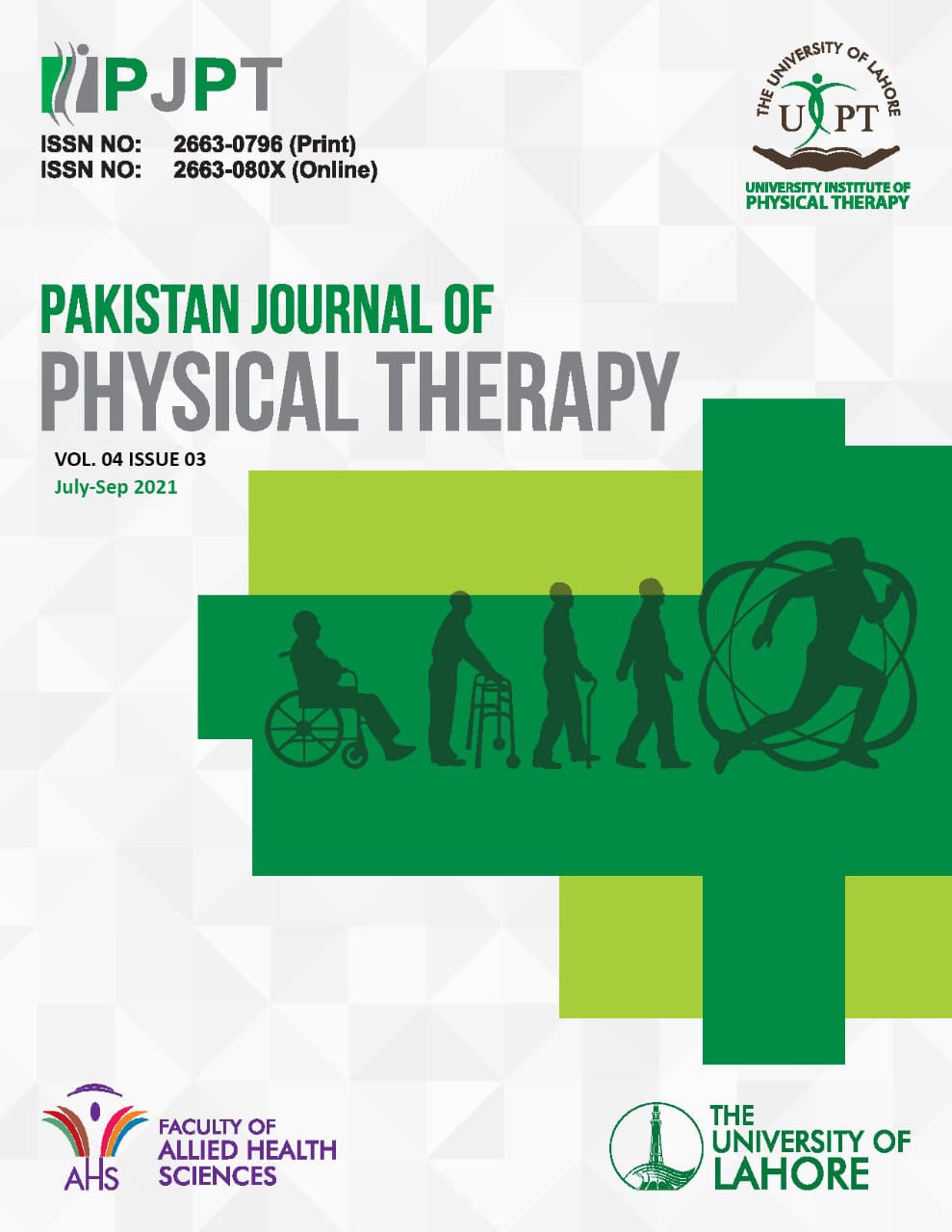Prevalence of Generalized Joint Hypermobility and Its Association with Sports Injuries in Cricket Players
DOI:
https://doi.org/10.52229/pjpt.v4i3.1672Keywords:
Hypermobility, Prevalence, Sports injuriesAbstract
Background: Generalized joint hypermobility has been initiated as a risk factor for injuries to the ankle, knee, and shoulder joints
Objective: The objective is to assess the prevalence of generalized joint hypermobility and its association with sports injuries in cricket players.
Methodology: A total number of One hundred and fifty one subjects 115 male, 36 female; mean age 27.45 participated in this study by using non probability convenience sampling. Self-modified questionnaire was used.
Results: The results exhibited that 49 players (32.5%) have hypermobility and 102 players (67.5%) did not have hypermobility. (9.9%) of the participants have 0 score out of 9 which is minimum and (21.2%) of the participants have 4 score out of 9 which is maximum. Indirect (overuse) injuries 46.3% had higher percentage. 20.5% of the athlete had a history of recurrence. (0.043) was the p-value which indicated that a significant association between sports injuries and generalized joint hypermobility.
Conclusions: Negative hypermobile athletes also prone to sports injuries. Among all the sports injuries, injuries of the lower limb (hamstring and quadriceps strain) were most common as compared to the upper limb.



